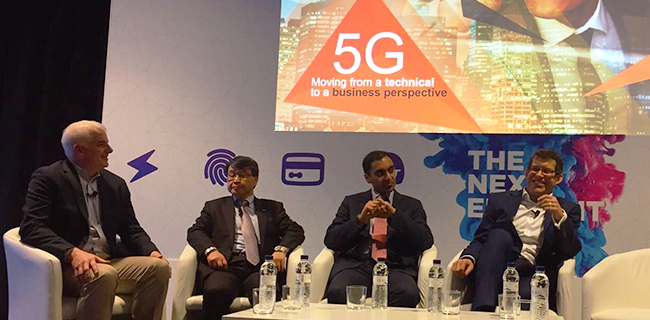Why invest in 5G? This question was considered by our panellists at yesterday’s industry seminar – ‘5G – Beyond Technology into Business Impact’ – where attendees discussed the business challenges involved in rolling out 5G technology at scale.
As Adam Koeppe, Vice-President (Access Technology Planning) at Verizon, pointed out during the session: “the LTE roadmap is healthy, robust and has a long way to go.” There remains significant value in 4G, even ten years into its lifetime; that being the case, what incentive is there for operators to prioritise resources for 5G? Why spend billions of dollars on new cells with a viable technology already in place?
Chair of Network 2020 at Deutsche Telekom, Bruno Jacobfeuerborn, was clear on the scale of the challenge, citing recent research from Barclays, which concluded that only the strongest of the fully-integrated operators will be able to afford to deliver the full spectrum of 5G capabilities. “Gigabit customers are going to need terabit networks,” he said, and the level of investment needed in new base stations will be significant. So how can this make business sense?
The answer, in short, is ‘demand’. Consumers are now increasingly aware that 5G can enable services which are not currently widely available, but in which interest is growing all the time. Take, for instance, ongoing innovations in the auto industry. Demand for connected vehicles has increased by over 400% since 2015, with exponential growth projected between now and 2020. Awareness of what smart vehicles have to offer is rapidly on the rise by businesses and individual consumers alike, and they have demonstrated their willingness to pay for it. Peter Virk, Director of Connected Technologies & Apps at Jaguar Land Rover gave the seminar an overview of the new capabilities which have fuelled this demand, and how those of the near future will continue to do so, and a reminder of what they will all need a great deal more of: bandwidth. The advent of autonomous vehicles cannot happen on the basis of today’s infrastructure alone: it requires 5G capability, which means consumers demand it.
Adam Koeppe reminded the session that “as an operator, our challenge is to grow the business: period.” Few businesses with an eye to the future will content themselves with the status quo, even where that is feasibly an option. As new use cases arise, operators find even now they must revise their business models for existing LTE technologies, in a constant process of making them economical – the foundations of which were laid ten years earlier. It is therefore simply imperative to meeting the demands of consumers, and maintaining relevance to their lives, to begin that process in earnest for 5G. “We need”, Bruno Jacobfeuerborn urged attendees, “to do something to get the terabit society up and running.”
So how can it be done? Mr Jacobfeuerborn explained that 5G constitutes a “significantly improved and more intelligent” network technology, through which greatly more efficient returns can be made on investment in hardware. “Slicing is the future”, he informed attendees, in reference to the practice which allows various services and sectors to be hosted from each base station; in essence, multiple networks from single installations. Ultrahigh broadband, for example, can therefore be delivered from the same hardware as Massive IoT; this represents a huge change in hardware capability. Advances such as this – along with redoubling of efforts between operators to enhance interoperability with interconnection, of which there have been several successful examples recently – should enable transition to the 5G era.
Dan Warren, Head of 5G Research at the Samsung R&D Institute, left the session with an interesting challenge. With IoT projected to generate up to seven trillion connections, there are undoubtedly considerable investment challenges ahead for the industry, but also tremendous opportunities; “and if you’re not on that bandwagon now, you’re going to miss out on the opportunities the vertical industries are going to present to you.” With 5G comes not only a twenty-fold increase in potential cell-usage capacity, but also the elimination of bandwidth as a differentiating factor between MNOs.
As IoT expands, high-bandwidth functionality will become a core contractual service obligation, rather than an optional upgrade. Operators will benefit from large contracts, but will no longer be able to compete on the basis of bandwidth, leaving little but price on which to vie for customers. It is therefore incumbent on those who wish to compete in that space at all to invest now in order to allow competitive pricing later. It is ultimately up to individual operators to assess their business case for entering the 5G space, but the message from our session was clear: for those that do, the time to invest is now.
